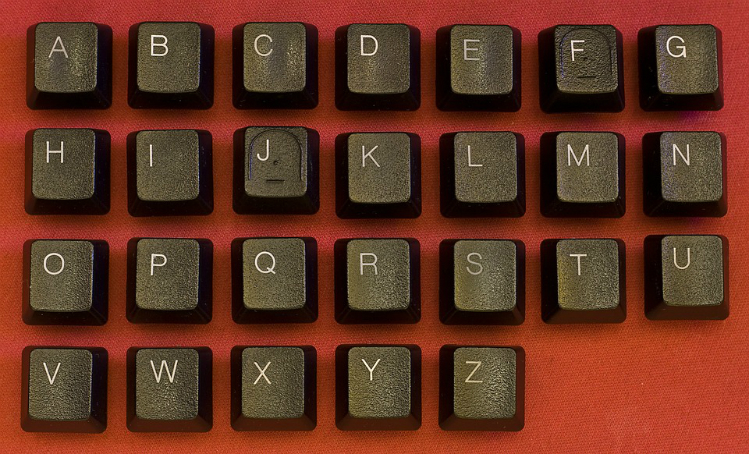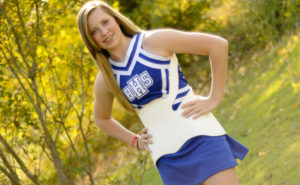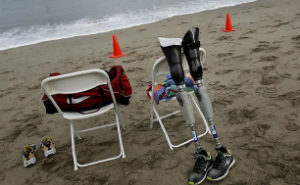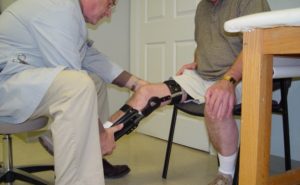Choosing the right scoliosis treatment for your child is important. Especially for new diagnoses, becoming informed and learning about scoliosis back braces helps make these decisions easier.
Receiving a scoliosis diagnosis can be the first step in a long period of treatment in order to stop the spine from becoming any more curved. While everyone’s spine does curve to some degree, the extent of the curve is what causes concern. When scoliosis is treated using a scoliosis back brace at a young age, it is possible to stop the spinal curve from progressing any further. Left untreated, scoliosis will continue to become more serious as a child grows up.
If your child has become newly diagnosed with scoliosis, or if you suspect they may have scoliosis, below you will find explanations for the terms used in diagnosing and treating this condition.
Testing and Screening for Scoliosis
There are several ways to screen for scoliosis, all of which should be considered annually. The most common processes include the following:
- Adam’s Forward Bend Test. Generally, the way scoliosis is first suspected or diagnosed is through performing this test in schools. A medical professional will ask your child to straigten their legs, bend forward, and extend their arms downward to examine the symmetry
- Doctor’s Examination. If an Adam’s Forward Bend Test shows a potential spinal curvature, you should visit your child’s doctor for further examination.
- X-ray. After a physical examination, your child’s doctor may order an X-ray to confirm the presence of scoliosis and see the significance of the spinal curve. The degree of this curve will affect what type of scoliosis your child and has what kind of treatment is needed.
Types of Scoliosis
After undergoing testing, your child will most likely be diagnosed with idiopathic (or adolescent) scoliosis. Idiopathic or adolescent scoliosis is the most common form of scoliosis and the one that bracing is used to treat.
There are also three rarer types of scoliosis:
- Congenital. This type of scoliosis develops in the womb and exists at birth. Congential scoliosis is very rare and requires surgery. Your pediatrician determines the age at which surgery will be recommended.
- Degenerative. This type of scoliosis is also called adult scoliosis and usually occurs later in live. It can be caused by an untreated form of scoliosis earlier in life or by a gradual degeneration of your spine’s facet joints. Treatment for this form focusing on pain management rather than stopping the curvature through bracing.
- Neuromuscular. In this type of scoliosis, spinal curves are caused by neuromuscular conditions like cerebral palsy or muscular dystrophy.
The types of idiopathic scoliosis can further be categorized according to the child’s age at which a spinal curve is detected:
- Adolescent (10 to 18 years of age)
- Infantile (birth to 3 years old)
- Juvenile (3 to 9 years old)
There are also different types of spinal curves. C curves and S curves are both seen in scoliosis patients, but the location and direction in which the spine curves in relation to the rest of the spine have different terms:
- Dextroscoliosis describes a spine that curves to the right.
- Levoscoliosis describes a spine that curves to the left.
- Lumbar Scoliosis is a curve that occurs in the lumbar, or lower area, of the spine.
- Thoracic Scoliosis is a curve that occurs in the thoracic, or middle area, of the spine. This is the most common scoliosis diagnosis.
- Thoracolumbar Scoliosis is a curve that affects spinal vertebrae in the upper lumbar and lower thoracic parts of the back.
Scoliosis Treatment Options
There are a number of treatment options for idiopathic scoliosis, but the most common for the majority of children is an orthotic back brace that stabilizes the spine and stops it from continuing to curve. Physical therapy may be coupled with the brace or used after wearing the brace for a period of time. For very mild cases of scoliosis, physical therapy and a “watch and see” attitude may be the only treatments necessary.
In severe cases, surgery can be performed. A spinal fusion will straighten the spine using steel rods and fusion vertebrae using bone grafts to stop them from continuing to curve. Recovery takes time, but in most cases, a full recovery and a normal life is 100% possible following surgery.
Back Braces for Scoliosis
There are three main types of back braces used for scoliosis treatment:
- Boston Brace (Thoraco-Lumbo-Sacral-Orthosis, or TLSO)
- Charleston Bending Brace, or “nighttime” brace
- Milwaukee Brace (Cervico-Thoraco-Lumbo-Sacral-Orthosis, or CTLSO),
- Total Contact TLSO
Each of these three work a little differently, but their end goal is the same. With the right back brace for scoliosis, the spine can be discouraged from curving any further, reducing the risks of other health problems. While the TLSO or Boston brace and the CTLSO or Milwaukee brace are both worn 23 hours per day, the Charleston Bending Brace is meant to be worn only while sleeping.
The main difference between the Boston and Milwaukee braces is that the Milwaukee brace also has a neck ring for additional stabilization, which is attached to the brace with vertical bars. The Boston and Total-Contact TLSO braces have total contact with the entire torso.
Most of these braces are made of hard plastic that is fabricated and molded to the child’s body based on cast made by a pediatric orthotist to ensure a proper fit. For example, a Total Contact TLSO is made from a cast of the patients “trunk” (or spine) on a special spinal casting table with corrections molded into the brace mold itself. With a Boston brace, however, it is custom made to patient measurements using a CAD/CAM system and corrective pads are added to the module.
For more information on finding the right back brace for scoliosis, contact Horton’s Orthotics and Prosthetics at 501-683-8889. We can help your child get the support they need every step of the way.
[maxbutton id=”7″]




Leave a Reply